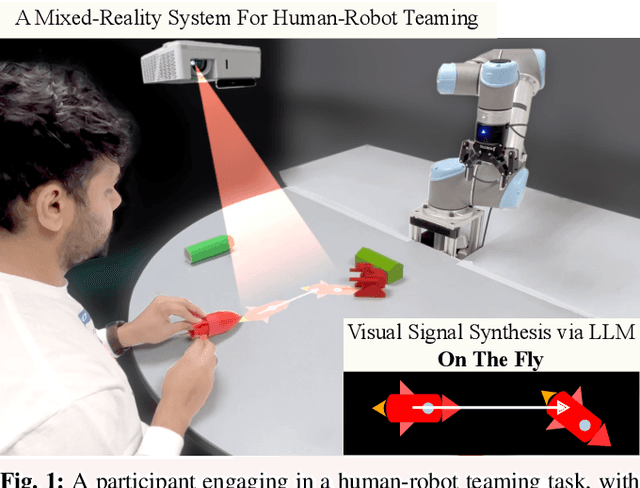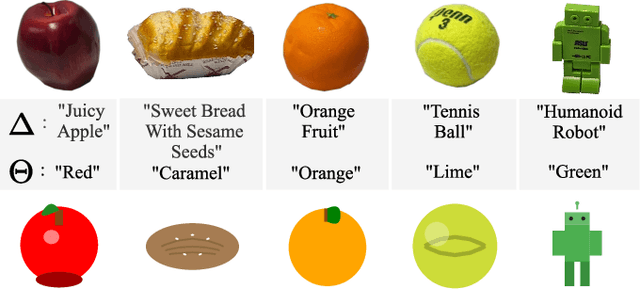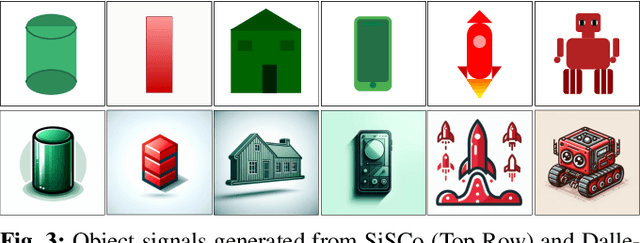Heni Ben Amor
Interactive Robotics Laboratory, Arizona State University, Tempe, AZ, 85281, USA
Repairing Neural Networks for Safety in Robotic Systems using Predictive Models
Nov 07, 2024



Abstract:This paper introduces a new method for safety-aware robot learning, focusing on repairing policies using predictive models. Our method combines behavioral cloning with neural network repair in a two-step supervised learning framework. It first learns a policy from expert demonstrations and then applies repair subject to predictive models to enforce safety constraints. The predictive models can encompass various aspects relevant to robot learning applications, such as proprioceptive states and collision likelihood. Our experimental results demonstrate that the learned policy successfully adheres to a predefined set of safety constraints on two applications: mobile robot navigation, and real-world lower-leg prostheses. Additionally, we have shown that our method effectively reduces repeated interaction with the robot, leading to substantial time savings during the learning process.
SiSCo: Signal Synthesis for Effective Human-Robot Communication Via Large Language Models
Sep 20, 2024



Abstract:Effective human-robot collaboration hinges on robust communication channels, with visual signaling playing a pivotal role due to its intuitive appeal. Yet, the creation of visually intuitive cues often demands extensive resources and specialized knowledge. The emergence of Large Language Models (LLMs) offers promising avenues for enhancing human-robot interactions and revolutionizing the way we generate context-aware visual cues. To this end, we introduce SiSCo--a novel framework that combines the computational power of LLMs with mixed-reality technologies to streamline the creation of visual cues for human-robot collaboration. Our results show that SiSCo improves the efficiency of communication in human-robot teaming tasks, reducing task completion time by approximately 73% and increasing task success rates by 18% compared to baseline natural language signals. Additionally, SiSCo reduces cognitive load for participants by 46%, as measured by the NASA-TLX subscale, and receives above-average user ratings for on-the-fly signals generated for unseen objects. To encourage further development and broader community engagement, we provide full access to SiSCo's implementation and related materials on our GitHub repository.
A Comparison of Imitation Learning Algorithms for Bimanual Manipulation
Aug 13, 2024



Abstract:Amidst the wide popularity of imitation learning algorithms in robotics, their properties regarding hyperparameter sensitivity, ease of training, data efficiency, and performance have not been well-studied in high-precision industry-inspired environments. In this work, we demonstrate the limitations and benefits of prominent imitation learning approaches and analyze their capabilities regarding these properties. We evaluate each algorithm on a complex bimanual manipulation task involving an over-constrained dynamics system in a setting involving multiple contacts between the manipulated object and the environment. While we find that imitation learning is well suited to solve such complex tasks, not all algorithms are equal in terms of handling environmental and hyperparameter perturbations, training requirements, performance, and ease of use. We investigate the empirical influence of these key characteristics by employing a carefully designed experimental procedure and learning environment. Paper website: https://bimanual-imitation.github.io/
Achieving Human Level Competitive Robot Table Tennis
Aug 07, 2024



Abstract:Achieving human-level speed and performance on real world tasks is a north star for the robotics research community. This work takes a step towards that goal and presents the first learned robot agent that reaches amateur human-level performance in competitive table tennis. Table tennis is a physically demanding sport which requires human players to undergo years of training to achieve an advanced level of proficiency. In this paper, we contribute (1) a hierarchical and modular policy architecture consisting of (i) low level controllers with their detailed skill descriptors which model the agent's capabilities and help to bridge the sim-to-real gap and (ii) a high level controller that chooses the low level skills, (2) techniques for enabling zero-shot sim-to-real including an iterative approach to defining the task distribution that is grounded in the real-world and defines an automatic curriculum, and (3) real time adaptation to unseen opponents. Policy performance was assessed through 29 robot vs. human matches of which the robot won 45% (13/29). All humans were unseen players and their skill level varied from beginner to tournament level. Whilst the robot lost all matches vs. the most advanced players it won 100% matches vs. beginners and 55% matches vs. intermediate players, demonstrating solidly amateur human-level performance. Videos of the matches can be viewed at https://sites.google.com/view/competitive-robot-table-tennis
Ubiquitous Robot Control Through Multimodal Motion Capture Using Smartwatch and Smartphone Data
Jun 03, 2024



Abstract:We present an open-source library for seamless robot control through motion capture using smartphones and smartwatches. Our library features three modes: Watch Only Mode, enabling control with a single smartwatch; Upper Arm Mode, offering heightened accuracy by incorporating the smartphone attached to the upper arm; and Pocket Mode, determining body orientation via the smartphone placed in any pocket. These modes are applied in two real-robot tasks, showcasing placement accuracy within 2 cm compared to a gold-standard motion capture system. WearMoCap stands as a suitable alternative to conventional motion capture systems, particularly in environments where ubiquity is essential. The library is available at: www.github.com/wearable-motion-capture.
Enabling Stateful Behaviors for Diffusion-based Policy Learning
Apr 18, 2024



Abstract:While imitation learning provides a simple and effective framework for policy learning, acquiring consistent actions during robot execution remains a challenging task. Existing approaches primarily focus on either modifying the action representation at data curation stage or altering the model itself, both of which do not fully address the scalability of consistent action generation. To overcome this limitation, we introduce the Diff-Control policy, which utilizes a diffusion-based model to learn the action representation from a state-space modeling viewpoint. We demonstrate that we can reduce diffusion-based policies' uncertainty by making it stateful through a Bayesian formulation facilitated by ControlNet, leading to improved robustness and success rates. Our experimental results demonstrate the significance of incorporating action statefulness in policy learning, where Diff-Control shows improved performance across various tasks. Specifically, Diff-Control achieves an average success rate of 72% and 84% on stateful and dynamic tasks, respectively. Project page: https://github.com/ir-lab/Diff-Control
iRoCo: Intuitive Robot Control From Anywhere Using a Smartwatch
Mar 11, 2024Abstract:This paper introduces iRoCo (intuitive Robot Control) - a framework for ubiquitous human-robot collaboration using a single smartwatch and smartphone. By integrating probabilistic differentiable filters, iRoCo optimizes a combination of precise robot control and unrestricted user movement from ubiquitous devices. We demonstrate and evaluate the effectiveness of iRoCo in practical teleoperation and drone piloting applications. Comparative analysis shows no significant difference between task performance with iRoCo and gold-standard control systems in teleoperation tasks. Additionally, iRoCo users complete drone piloting tasks 32\% faster than with a traditional remote control and report less frustration in a subjective load index questionnaire. Our findings strongly suggest that iRoCo is a promising new approach for intuitive robot control through smartwatches and smartphones from anywhere, at any time. The code is available at www.github.com/wearable-motion-capture
"Task Success" is not Enough: Investigating the Use of Video-Language Models as Behavior Critics for Catching Undesirable Agent Behaviors
Feb 06, 2024Abstract:Large-scale generative models are shown to be useful for sampling meaningful candidate solutions, yet they often overlook task constraints and user preferences. Their full power is better harnessed when the models are coupled with external verifiers and the final solutions are derived iteratively or progressively according to the verification feedback. In the context of embodied AI, verification often solely involves assessing whether goal conditions specified in the instructions have been met. Nonetheless, for these agents to be seamlessly integrated into daily life, it is crucial to account for a broader range of constraints and preferences beyond bare task success (e.g., a robot should grasp bread with care to avoid significant deformations). However, given the unbounded scope of robot tasks, it is infeasible to construct scripted verifiers akin to those used for explicit-knowledge tasks like the game of Go and theorem proving. This begs the question: when no sound verifier is available, can we use large vision and language models (VLMs), which are approximately omniscient, as scalable Behavior Critics to catch undesirable robot behaviors in videos? To answer this, we first construct a benchmark that contains diverse cases of goal-reaching yet undesirable robot policies. Then, we comprehensively evaluate VLM critics to gain a deeper understanding of their strengths and failure modes. Based on the evaluation, we provide guidelines on how to effectively utilize VLM critiques and showcase a practical way to integrate the feedback into an iterative process of policy refinement. The dataset and codebase are released at: https://guansuns.github.io/pages/vlm-critic.
Multimodal Learning of Soft Robot Dynamics using Differentiable Filters
Nov 12, 2023



Abstract:Differentiable Filters, as recursive Bayesian estimators, possess the ability to learn complex dynamics by deriving state transition and measurement models exclusively from data. This data-driven approach eliminates the reliance on explicit analytical models while maintaining the essential algorithmic components of the filtering process. However, the gain mechanism remains non-differentiable, limiting its adaptability to specific task requirements and contextual variations. To address this limitation, this paper introduces an innovative approach called {\alpha}-MDF (Attention-based Multimodal Differentiable Filter). {\alpha}-MDF leverages modern attention mechanisms to learn multimodal latent representations for accurate state estimation in soft robots. By incorporating attention mechanisms, {\alpha}-MDF offers the flexibility to tailor the gain mechanism to the unique nature of the task and context. The effectiveness of {\alpha}-MDF is validated through real-world state estimation tasks on soft robots. Our experimental results demonstrate significant reductions in state estimation errors, consistently surpassing differentiable filter baselines by up to 45% in the domain of soft robotics.
Open X-Embodiment: Robotic Learning Datasets and RT-X Models
Oct 17, 2023



Abstract:Large, high-capacity models trained on diverse datasets have shown remarkable successes on efficiently tackling downstream applications. In domains from NLP to Computer Vision, this has led to a consolidation of pretrained models, with general pretrained backbones serving as a starting point for many applications. Can such a consolidation happen in robotics? Conventionally, robotic learning methods train a separate model for every application, every robot, and even every environment. Can we instead train generalist X-robot policy that can be adapted efficiently to new robots, tasks, and environments? In this paper, we provide datasets in standardized data formats and models to make it possible to explore this possibility in the context of robotic manipulation, alongside experimental results that provide an example of effective X-robot policies. We assemble a dataset from 22 different robots collected through a collaboration between 21 institutions, demonstrating 527 skills (160266 tasks). We show that a high-capacity model trained on this data, which we call RT-X, exhibits positive transfer and improves the capabilities of multiple robots by leveraging experience from other platforms. More details can be found on the project website $\href{https://robotics-transformer-x.github.io}{\text{robotics-transformer-x.github.io}}$.
 Add to Chrome
Add to Chrome Add to Firefox
Add to Firefox Add to Edge
Add to Edge